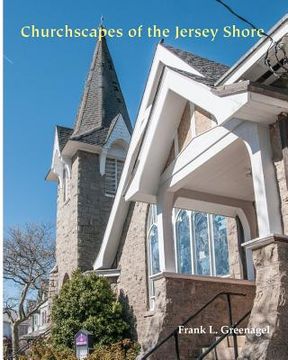Share
Churchscapes of the Jersey Shore: The Religious Architecture of Monmouth, Ocean, Atlantic & Cape May in the Eighteenth and Nineteenth Centuries (in English)
Frank L. Greenagel
(Author)
·
Createspace Independent Publishing Platform
· Paperback
Churchscapes of the Jersey Shore: The Religious Architecture of Monmouth, Ocean, Atlantic & Cape May in the Eighteenth and Nineteenth Centuries (in English) - Greenagel, Frank L.
$ 29.60
$ 37.00
You save: $ 7.40
Choose the list to add your product or create one New List
✓ Product added successfully to the Wishlist.
Go to My WishlistsIt will be shipped from our warehouse between
Friday, June 21 and
Monday, June 24.
You will receive it anywhere in United States between 1 and 3 business days after shipment.
Synopsis "Churchscapes of the Jersey Shore: The Religious Architecture of Monmouth, Ocean, Atlantic & Cape May in the Eighteenth and Nineteenth Centuries (in English)"
During the eighteenth and nineteenth centuries some 1,500 churches were erected in the state that have survived, perhaps half as many as were actually built. Whereas many of the earliest meetinghouses in shore communities were put up by Quakers, the design and construction of the Friends' meetinghouses in this region differs significantly from those in Salem, Camden, Glouchester and Burlington counties, probably because Friends in the counties along the Delaware River came directly from England (in most cases), whereas those in the shore region were second generation New England and Long Island families and didn't have the same building traditions. For Methodists, Baptists, and smaller rural Presbyterian congregations, regional traditions of what a proper church should look like, and contractors/carpenters with experience in building such churches and schools, is a succinct summary of why their early churches (and more than a few of the later ones) look the way they do. But congregations largely made of wealthy families from Philadelphia sought architects from home who could build a church consistent with their standing in the community and financial resources. Their building committees and/or major benefactors allowed the architect more latitude to express or innovate with forms and materials, especially those that found favor in other wealthy enclaves. Engineering and new materials made larger spans and elimination of interior columns possible and so throughout the state, we find the auditorium plan for churches popular. Demand for additional space for Sunday school was as common for congregations along the shore as it was for those in the Pine Barrens, so we find basement meeting rooms ubiquitous. Denominations that emphasized ritual (Roman Catholics and Episcopalians) held fast to neo-medieval styles and interior arrangements. Evangelical denominations also often adopted Gothic styles, especially as they felt a need to compete for membership and prestige. Ultimately, eclectic combinations of towers, gables, round arch and pointed arch openings, arcades and crenelations and rusticated stone-most of which had medieval precedents-dominate the last decades of building the churchscapes of the shore. Stick and Shingle style buildings are perhaps more common along the shore than in north Jersey urban cities; I have suggested that the summer resort zeitgeist and the tradition of upscale "cottages" like those at Newport and coastal Maine may have influenced that choice of style. Architects trained in Europe brought new possibilities, and affluence sought expression and differentiation. But the wooden-frame chapels of Methodists, Baptists and union congregations continued to be built in the Pine Barrens during this period.

